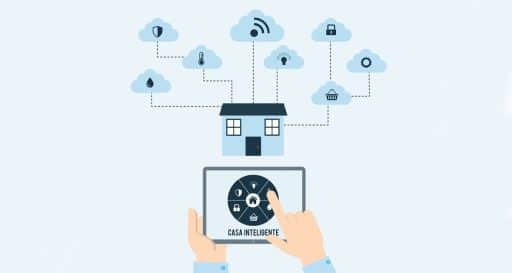
How does home automation work?
Home automation systems consist of hardware, communication and electronic interfaces that are used to integrate electrical devices with each other. It controls home activities at the touch of a button. From any remote location, users can adjust home entertainment system controls or change the temperature of a specific room. Home automation software is typically connected through a computer network so that users can adjust settings on their personal computers.
The three elements to consider in home automation are sensors, controllers and actuators.
- Sensors can monitor changes in sunlight, temperature, motion detection, door opening and more; through them, home automation systems can adjust settings to the user’s preferred level.
- A controller is a device that is used to send and receive messages about the status of a user’s home automation functions.
- Actuators can be light switches, motors or electric valves that control the mechanism or function of the home automation system.
Advantages of automation
- Security: You can perform functions such as turning on lights with a flick of your finger before you get home, or operate them when you’re not at home to deter potential burglars. Door locks are another automated home product that can improve the security of your home. Control your home from a simple app. With some products, you can even receive an alert every time someone enters your home.
- Energy efficiency: Improve the energy efficiency of your home by remotely turning off systems and appliances when they are not in use. In addition to standard home automation products that give you active control, some products actively monitor systems and give homeowners the experience, knowledge and guidance for better control and energy efficiency.
- Savings: By automating the use of systems and appliances, we can calculate and optimise their operation and only run them when they are needed and save both energy and money on our bill. A smart home consumes between 35% and 40% less than a traditional one.
- Convenience: Connected home products, such as Wi-Fi thermostats, allow you to adjust the temperature of your home via a mobile app so your family is always comfortable.
Smart home systems
There are different smart home systems. In this section we are going to talk about the most important ones:
- Digital meter: This may be the most unknown to people, since it is not really “inside” the house. This type of meter allows the distributor to carry out remote management, such as reading meters or registering electricity. It also allows the user to have control over their consumption and make savings.
- Smart alarms: This type of home alarm system allows you to control your home remotely. As mentioned above, they increase the security of your home by monitoring in real time or receiving alerts every time someone enters your home.
- Intelligent climate control: Thanks to these systems we can control the temperature of our home from anywhere. But not only that, these types of systems are also capable of acting on their own depending on external aspects such as the temperature or the time of day.
- Smart appliances: There are all kinds of smart appliances: ovens, washing machines, dishwashers, fridges… Their main quality is that they consume much less than traditional ones, plus we can control them remotely.
Smart solar panels
Smart solar panels are IoT-based applications that aim to improve energy efficiency and achieve an intelligent use of solar energy. All tasks can be performed remotely at any time of the day thanks to the WiFi connection between the self-consumer and the control device.
In addition, this type of panel can also perform tasks on its own to maximise the energy efficiency of the panels.
This type of solar panel uses artificial intelligence to improve the cost-effectiveness and quality of the solar panel’s energy efficiency. Thanks to the “clusters”, a technological system that detects all changes in sunlight, the panels will change position to make the most of the solar radiation.
If overheating occurs due to overheating or prolonged exposure, the panel itself will change its operation so as not to stop working, but not to suffer any damage.
The user can also remotely change the location or switch the system on or off.
Another thing that can be controlled is the use of the energy produced. It can be poured into a box or battery.






